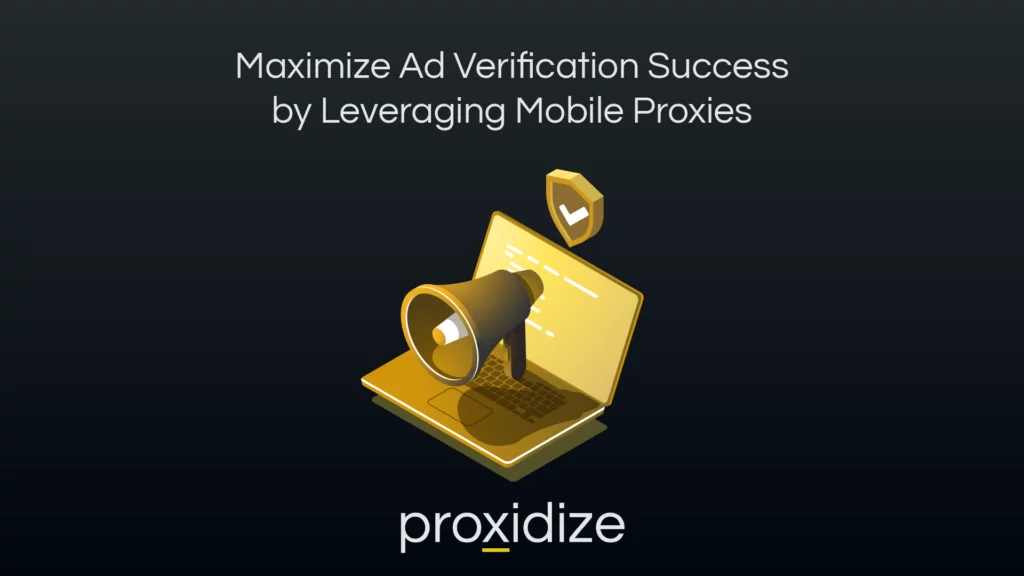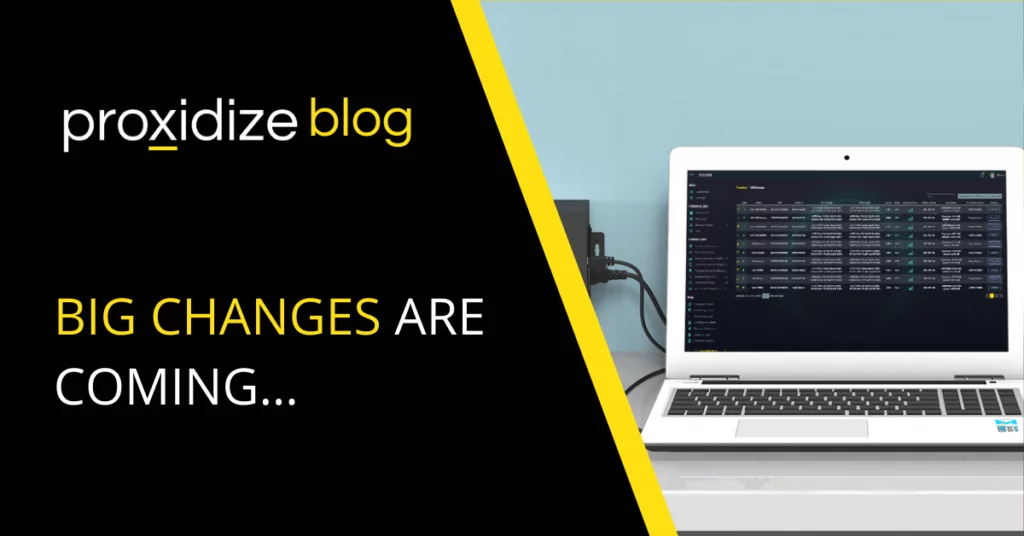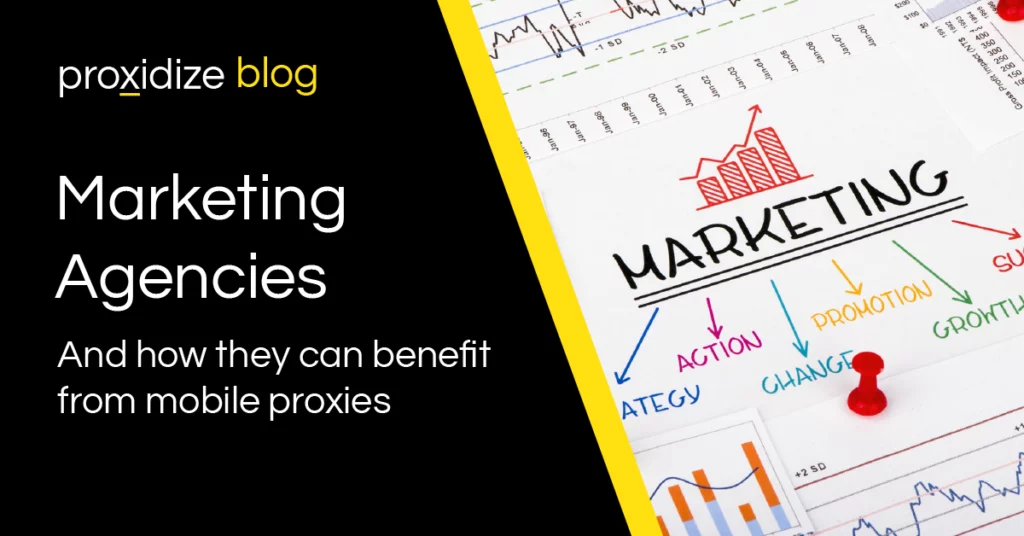As the digital advertising market grows year after year, so too does the number of bad actors seeking to benefit fraudulently from it. As such, the relevance of ad verification keeps increasing. In 2024, $667.6 billion is expected to be spent on digital advertising, more than half of which will be in the United States alone. By contrast, ad fraud is estimated to be valued at $100 billion in the same year.
Nearly every business participates in some form of digital marketing or online advertisement. From advertisers of all sizes to ad platforms Amazon Advertising and Google Ads, to websites selling ad space, the safety and integrity of the digital advertising environment falls to a highly specialized sector: Ad verification companies.
A lot of what these companies do involves verifying ads and ad space, combating and identifying ad fraud, and actively monitoring ad fraudsters. Automation is needed to do this at the scale required, which necessitates the use of proxies This article will endeavor to make the case that mobile proxies are particularly well suited to the specific needs of ad verification companies.
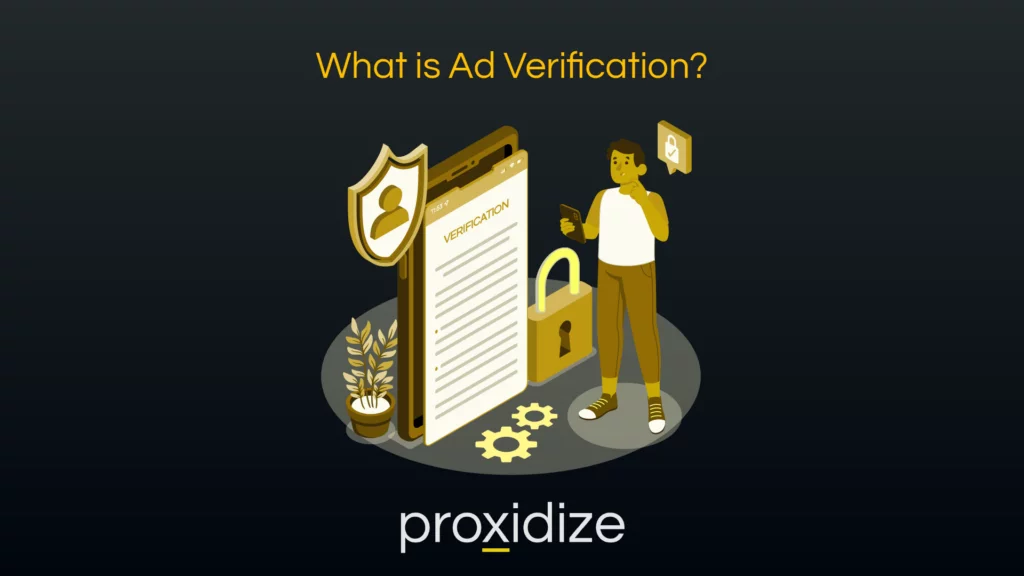
What is Ad Verification?
Ad verification is the process of verifying whether real people saw and interacted with an ad in a safe and relevant environment. For each stakeholder, ad verification fulfills a different need, as each party has its own priorities, and ad verification companies cater to them all.
At their core, ad verification companies’ primary business is to ensure the integrity and effectiveness of digital advertising. The scale of digital advertising operations, the amount of user data involved, and the potential damage to clients’ brands make ad verification an important if not gargantuan undertaking.
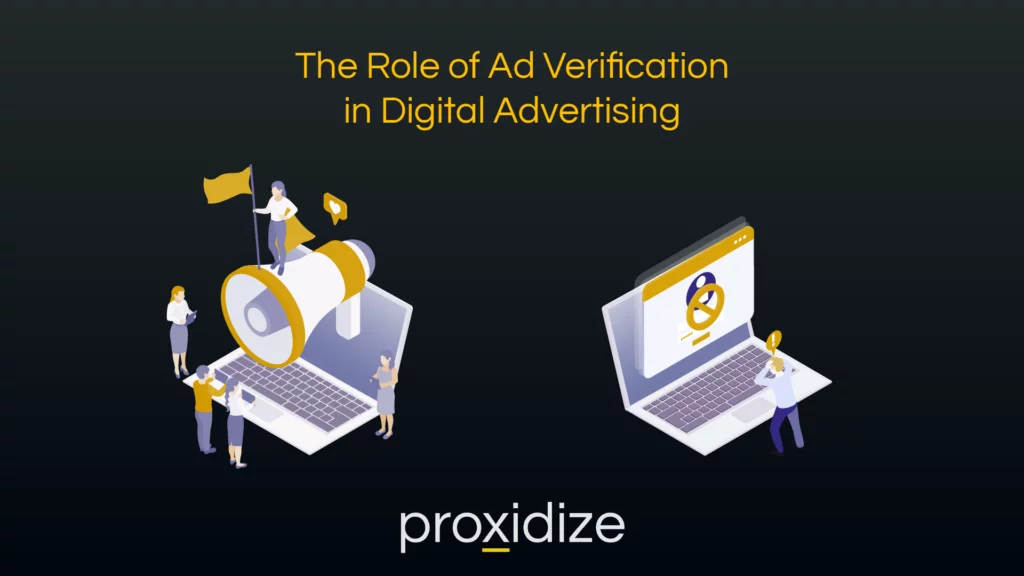
The Role of Ad Verification in Digital Advertising
Shared Ad Verification Needs
The following shared needs between all digital advertising stakeholders:
- Combating ad fraud: All parties benefit from ad fraud detection and prevention. The digital advertising environment as a whole — including users.
- Data accuracy and reporting: All parties benefit from accurate information on ad performance and ad inventory quality and the timely delivery of that information.
- Brand protection: All parties benefit from having both the ads and the space on display being consistent with each party’s brand values.
Ad Verification for Advertisers
Advertisers want their ads to be displayed in places that are relevant to their target audience, where real people can interact with them, in places that are reputable and safe.
Ad verification for advertisers involves:
- Advertising campaign performance measurements
- Viewability verification
- Targeting accuracy
- Maximizing ROI
Ad Verification for Ad Platforms
Ad platforms want to attract reputable advertisers by ensuring an inventory of safe, reputable ad spaces and facilitating efficient transactions between advertisers and publishers.
Ad verification for ad platforms involves:
- Inventory quality management
- Improved marketplace efficiency
Ad Verification for Publishers
Publishers want to maximize the revenue generated from their ad space. They do this by creating high-quality content to encourage real visitors and ensuring ads are relevant to their audience to enhance user experience,
Ad verification for publishers involves:
- Ad space optimization
- Ad suitability verification
- Revenue protection
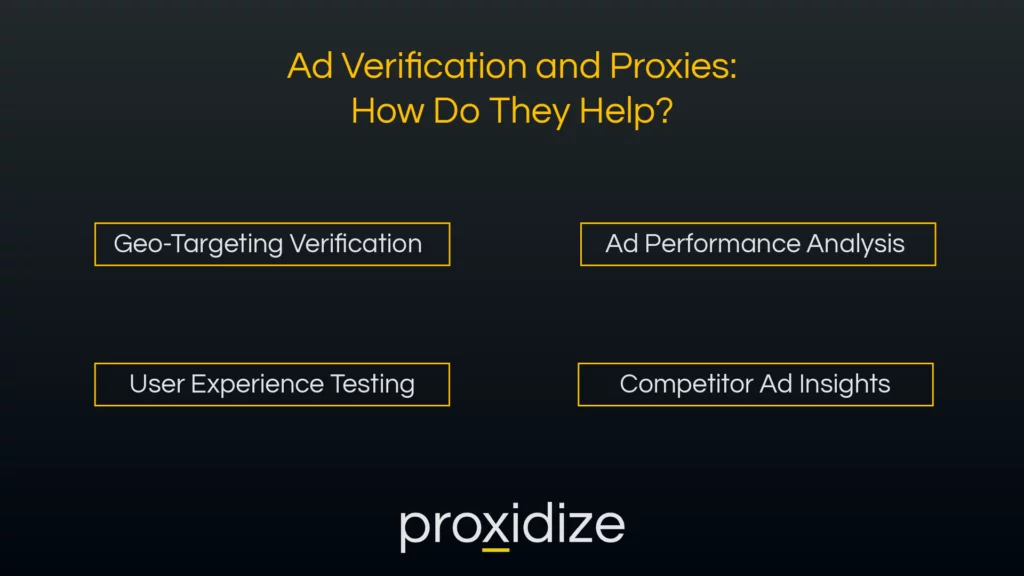
Ad Verification and Proxies
Verifying ads, monitoring the ecosystem, and collecting data requires automation. The following is a list of activities ad verification companies might use proxies for as part of their regular operations.
- Geo-Targeting Verification: Ensuring that ads reach their intended audience within a specific geographic area. By using proxies in those regions, ad verifiers can check if those ads actually appear as intended. It is also useful for measuring how ads are performing in different markets.
- Ad Performance Analysis: Evaluating how ads are performing across different platforms, devices, and network conditions. Proxies allow verification companies to simulate different user environments such as device types.
- Brand Safety Checks: Protecting brand reputation by making sure ads appear alongside appropriate content and that appropriate ads appear in ad spaces. Proxies enable verification companies to anonymously scan vast numbers of websites where their clients’ ads might appear. Despite this scanning being benign, anti-scraping technology employed by websites might still block good bots. Proxies lower the chance of that happening.
- Competitor Ad Insights: Evaluating not just their clients’ ads but also monitoring how other ads perform on the internet can provide important data for competition analysis. By using proxies, ad verification companies can simulate real users viewing the ads from various locations and in different conditions.
- Compliance Verification: Ensuring both advertisers and publishers comply with legal standards and industry regulations in different regions. Using proxy servers in those regions can help ensure compliance.
- User Experience Testing: Testing the ways in which real users interact with ads and spaces, which influences engagement rates and campaign performance. Ad verification companies can replicate a wide variety of user-profiles and behaviors with proxies to gain insights into how different user segments might interact with ads.
A significant challenge in the digital landscape is the persistent issue of ad fraud, a deceptive practice that presents a serious threat to the integrity of online advertising. This situation is a major concern for businesses relying on digital advertising, as it undermines the effectiveness and trustworthiness of online marketing strategies.
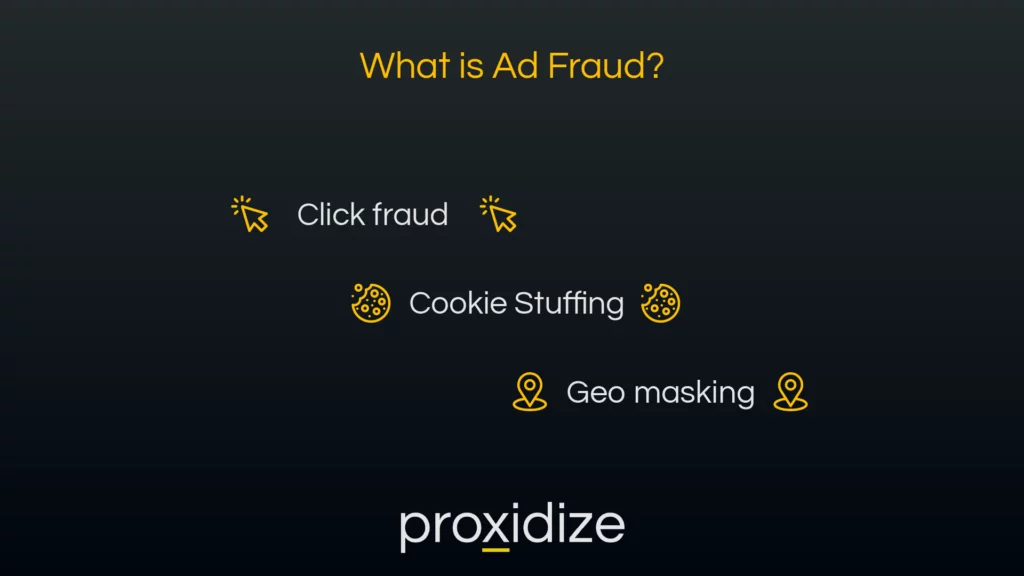
What is Ad Fraud?
Ad fraud is the general term for deceptive practices aimed at defrauding the digital advertising ecosystem. While the primary targets of fraudsters’ efforts are aimed directly at ad platforms and publishers, advertisers are often the ones who foot the bill.
Types of Ad Fraud
- Click Fraud: This is common in pay-per-click (PPC) advertising. Fraudsters use bots or click farms to generate fake clicks on ads, forcing advertisers to pay for non-genuine user interactions.
- Domain spoofing: Here, fraudsters impersonate high-value websites to sell ad space, misleading advertisers into thinking they’re buying space on reputable sites.
- Cookie Stuffing: This involves inserting cookies from other websites to misrepresent traffic sources, thus manipulating traffic attribution.
- Click Injection: A type of mobile ad fraud, particularly on Android devices, where fraudulent clicks are generated to take credit for app installations.
- Pixel Stuffing: Advertisements are crammed into tiny, often 1×1 pixel spaces on a screen, making them invisible to users but still generating ad impressions.
- Ad Stacking: Multiple ads are layered on top of each other, with only the top one being visible to the user, yet all ads in the stack generate impressions.
- Ad Injection: Involves inserting ads onto websites or apps without permission, sometimes replacing existing ads with fraudulent ones.
- Geo Masking: Fraudsters fake the geographical location of traffic to make it appear as though it’s coming from a more valuable demographic.
- Bot Fraud: This includes non-human traffic generated by bots, which can create false impressions and clicks on ads. While not strictly malicious, bot traffic accounts for a significant portion of ad interactions, artificially inflating statistics.
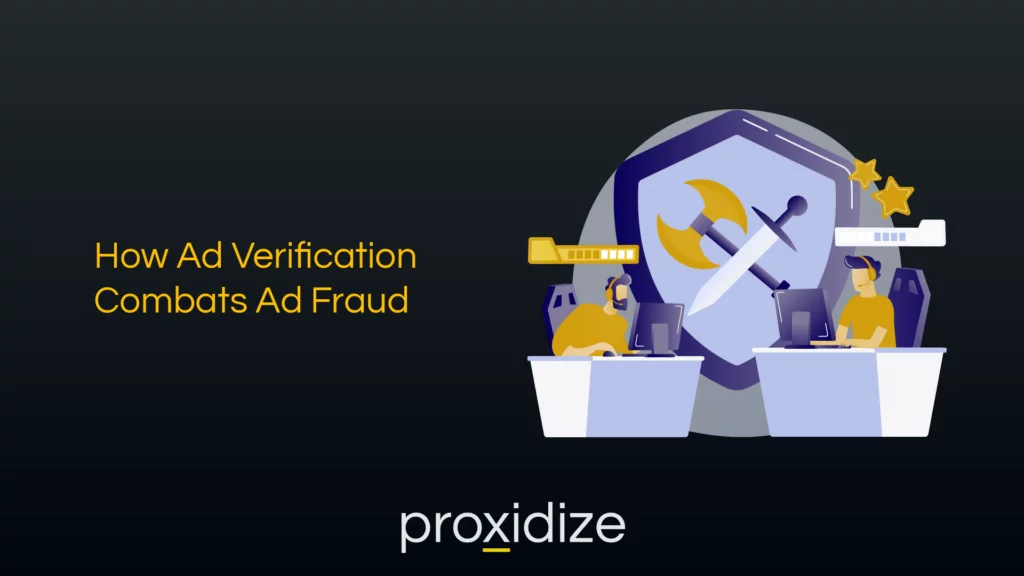
How Ad Verification Combats Ad Fraud
A main pillar of verification companies is to identify, monitor, and combat ad fraud. Fake ad traffic impacts everyone. Advertisers are charged for non-converting clicks and publishers lose revenue by losing the value of their ad space in the eyes of ad platforms. By taking a baseline of normal ad activity, ad verification companies can detect spikes of abnormal activity and take action. The following are some of the ways ad verification companies combat ad fraud:
- Detection of Bot Traffic: By using advanced algorithms and pattern recognition, traffic from bots can be identified and filtered out.
- Click Fraud Prevention: By analyzing click-through rates, time-on-page, and how users interact with the page, fraudulent clicks that drain advertising budgets can be identified.
- Ad Stacking and Pixel Stuffing Identification: By using web crawling at automated tools, ad placements and dimensions can be monitored. With proxies, this can be done anonymously to avoid being tracked and blocked by fraudsters.
- Spoofing Detection: By monitoring the digital signatures and IP addresses of websites where ads are placed, verifiers are able to flag instances of domain spoofing. Proxies assist in this by masking the surveillance activities.
- Geo Masking Identification: Fraudsters sometimes fake their geographic location to mislead advertisers. By analyzing traffic for signs of geo-spoofing, like IP geolocation not matching up with time zone and language settings, these fraudulent practices can be identified. Verifiers can use proxies to benchmark what normal geolocation data looks like.
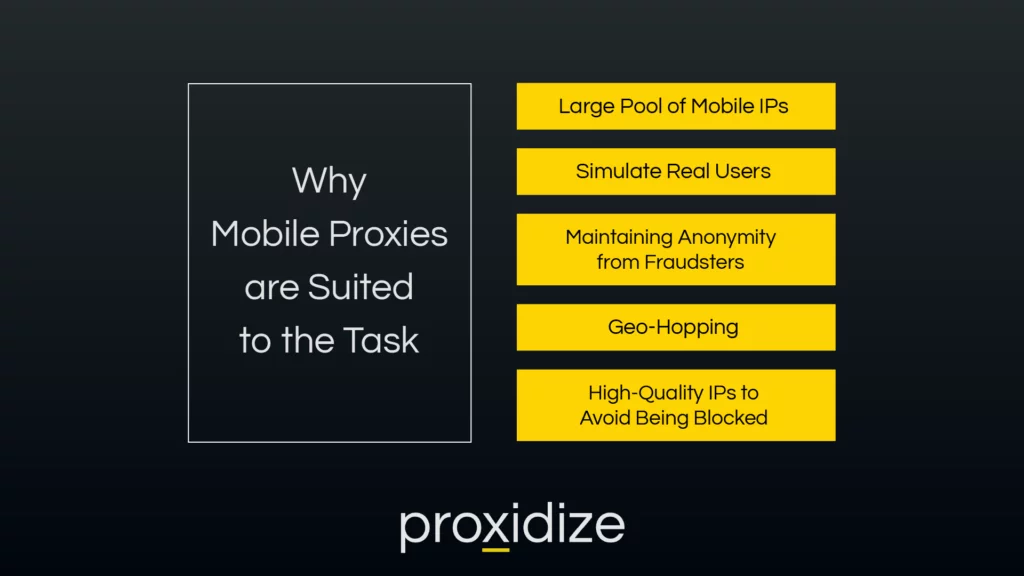
Why Mobile Proxies are Suited to the Task
There are several types of proxies that can be used by ad verification companies, including residential proxies. These have their place within ad verification, as residential IPs can be used to simulate IPs from home networks. However, in light of the fact that an estimated 70% of all ad spending will come from mobile by 2028, five percentage points higher than 2024, the need for mobile proxies continues to grow. Here are some of the reasons why.
Large Pool of Mobile IPs
Mobile proxies offer access to a large pool of mobile IP addresses sourced from mobile devices across various locations. These IPs are typically assigned by mobile network operators and can change dynamically as users move or as the mobile carrier rotates IPs. This vast pool is crucial because it allows ad verification companies to operate numerous requests or tasks without easily being flagged by ad fraudsters, due to the natural diversity and rotation of mobile IPs. In the event they are flagged, an IP can be rotated.
Simulate Real Users
Mobile proxies are invaluable for helping ad verification companies simulate authentic user behaviors because they use IP addresses from real mobile devices, critical for verifying ads and ad performance analysis. Since the IPs are associated with actual devices, they can mimic the geographic location, device type, and user behavior, providing more accurate and reliable testing and verification results.
Maintaining Anonymity from Fraudsters
Anonymity is a core feature of proxies, but mobile proxies do it better. Due to the inherent characteristics of mobile carrier infrastructure, mobile IP addresses regularly change. This regularity can shield the ad verification company’s actual IP address, making it extremely difficult for fraudsters to track online activities back to them. This layer of anonymity is particularly important when monitoring fraudulent websites or testing fake or malicious ads, where interacting with it more than once can lead to detection by fraudsters.
Geo-Hopping
Mobile proxies give ad verification companies the ability to simulate mobile traffic from various regions. This feature is crucial for activities requiring geo-specific ad testing verification, such as checking localized content, testing geo-restricted services, ensuring ad compliance with regional laws and regulations, or verifying geo-targeted ads in specific locations.
High-Quality IPs to Avoid Being Blocked
The quality of IP addresses used in mobile proxies is paramount to avoid being blocked or detected by ad fraudsters. High-quality mobile IPs are those that are less likely to be blacklisted or associated with malicious activities compared to data center IPs. Using high-quality mobile proxies ensures higher success rates in tasks like web scraping, ad verification, accessing geo-restricted content, and web crawling without erroneously triggering anti-bot or fraud detection mechanisms.
Conclusion
As the digital advertising market continues to grow, the significance of ad verification intensifies in the face of increasing ad fraud. Ad verification companies play a crucial role in underpinning the integrity of digital ads, catering to the needs of advertisers, ad platforms, and publishers. They tackle challenges such as ad fraud, maintaining data accuracy, and protecting brand values through comprehensive strategies including ad performance analysis, brand safety checks, and user experience testing.
Mobile proxies emerge as a key tool in this landscape. They provide a vast pool of dynamic IP addresses and the ability to simulate real user behavior, which is vital for accurate ad testing and analysis. These proxies also enable geo-hopping for geographic-specific testing and maintain anonymity, which is essential for investigating fraudulent activities without detection.
Overall, mobile proxies are not just beneficial but essential for ad verification companies especially as mobile traffic continues to grow as the primary source of online ad spending. This enables them to effectively safeguard the complex digital advertising ecosystem and ensure that investments in digital marketing are genuine, safe, and productive for all involved parties.
Frequently Asked Questions
What are the four core pillars of ad verification?
The four core pillars of ad verification are viewability, fraud detection, brand safety, and ad placement.
Viewability ensures ads are displayed in positions where users can see them, while fraud detection identifies and mitigates activities like click and impression fraud to ensure ad budgets are spent on genuine interactions. Brand safety involves making sure ads do not appear alongside inappropriate or harmful content, protecting the brand’s reputation. Ad placement verification ensures that ads reach the intended audience and are shown in relevant contexts, aligning with campaign objectives.
What are ad verification tools?
Ad verification tools are specialized software solutions designed to monitor, analyze, and report on the performance and compliance of digital advertisements. These tools, such as DoubleVerify, Integral Ad Science (IAS), and Moat by Oracle Data Cloud, help advertisers ensure their ads are displayed correctly and meet predefined standards. They provide insights into ad viewability, detect fraudulent activities, ensure brand safety, and verify proper ad placement, integrating with various ad platforms like Google Ads to deliver detailed reports and optimize campaign performance.


